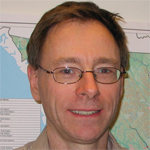An epidemiologist who directs the frailty course at Harvard School of Public Health, she mentors local graduate and medical students, and 8–10 trainees nationally via the Young Investigator program of the U.S. Bone & Joint Initiative. Her research has spanned various aspects of rheumatic disease, with a keen interest in the effect of biomechanics upon physical function and the influence of body composition.
Q: You are a big advocate of a multidisciplinary approach to research. Why so?
A: I think all comers should get to have a say on the path that an investigation is going. … The nice thing about the multidisciplinary aspect is that I am constantly learning from people from all levels of their career and my career, too. It provides a lot of enthusiasm and different ways of looking at things.
Q: You say funding is a ‘double-edged sword.’ Why so?
A: Not only do I feel the tightness of funding for my own scientific work, but I also see a number of younger people, people I have mentored coming up, not be able to maintain or attain a level of funding that will allow them to be a scientist. So they are not pursuing scientific endeavors, but looking to other careers, non-scientific careers. We lose those people who are fabulous scientists for tomorrow. I have strong hopes they will come back as the economy recovers and funding grows. That is the most challenging part right now.
Richard Quinn is a freelance writer in New Jersey.



